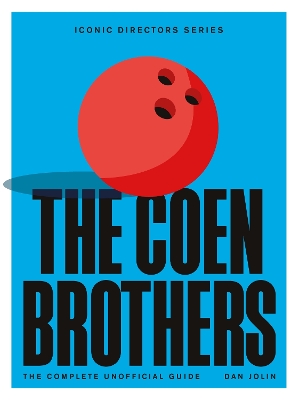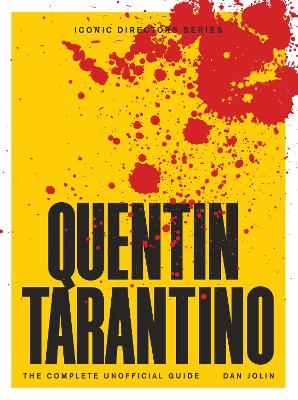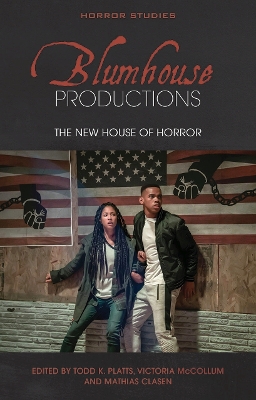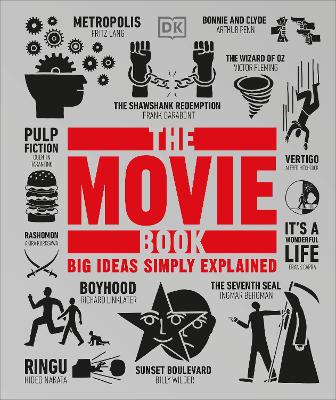Prison of Time
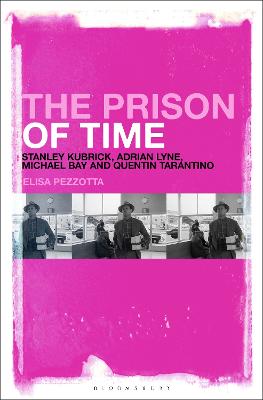 portes grátis
portes grátis
Prison of Time
Stanley Kubrick, Adrian Lyne, Michael Bay and Quentin Tarantino
Pezzotta, Elisa
Bloomsbury Publishing Plc
09/2022
272
Dura
Inglês
9781501380600
15 a 20 dias
Descrição não disponível.
Introduction
Chapter 1: Of Times - Temporalities
1.1 Fabula, Sujet, Story and Plot
1.2 The Order of the Film and Chronological Order of Diegetic Events
1.3 The Duration of Represented and Representational Time
1.4 Temporalities
Chapter 2: Stanley Kubrick's Temporal Revolution
2.1 The Emergence of Rhythm in Photographs and Photo-Essays
2.2 Experimenting with Narrative Schemas and Style in Shorts
2.3 Staging Time: Fear and Desire (1953)
2.4 Between Classical and Art-cinema Narration
2.4.1 The Order of Represented and Representational Time: Killer's Kiss (1955) and The Killing (1956)
2.4.2 Different Diegetic Times: Paths of Glory (1957) and a Virtuoso Style, Spartacus (1960) and Massive Configurations
2.4.3 Interruptions in Diegetic Time: Lolita (1962) and Dr. Strangelove or: How I Learned to Stop Worrying and Love the Bomb (1964)
2.5 Art-cinema narration. Beyond classical diegetic time
2.5.1 Slowness
2.5.2 Musical moments
2.6 Conclusion
Chapter 3: The Play of Suspense and Eroticism in Adrian Lyne
3.1 Foxes (1980) and Flashdance (1983)
3.2 From Staged Musical Performances to Staged Erotic Performances: Nine 1/2 Weeks (1986), Fatal Attraction (1987), Indecent Proposal (1993) and Unfaithful (2002)
3.3 Lolita (1997): Another Adaptation, Not a Remake
3.4 Jacob's Ladder: A Change in Lyne's Temporalities
3.5 Conclusion
Chapter 4: Temporalities: The Ghostly Conductor of Michel Bay's Films
4.1 Empathy between Spectators' and Characters' Experience of Time
4.2 Alternation of Action Scenes or Staged Action Performances and Comedy Sequences
4.3 Simultaneity through Cross-cuttings
4.4 Countdowns
4.5 Expanding Diegetic Time through Sequels and Flashbacks
4.6 Temporalities Comes to the Fore
4.7 Conclusion
Chapter 5: Quentin Tarantino: Master of Temporalities
5.1 Narrative Schemas
5.1.1 Playing with Narrative Schemas. Jumbled and Repeated Event Plots: Reservoir Dogs (1992), Pulp Fiction (1994), Jackie Brown (1997), Kill Bill: Vol. 1 (2003) and Vol. 2 (2004)
5.1.2 Towards Classical Temporalities: Death Proof (2007), Inglourious Basterds (2009), Django Unchained (2012), The Hateful Eight (2015) and Once Upon a Time... in Hollywood (2019)
5.1.3 Conclusions about Narrative Schemas
5.2 New Slowness
5.3 Conclusion
Conclusion
Bibliography
Index
Chapter 1: Of Times - Temporalities
1.1 Fabula, Sujet, Story and Plot
1.2 The Order of the Film and Chronological Order of Diegetic Events
1.3 The Duration of Represented and Representational Time
1.4 Temporalities
Chapter 2: Stanley Kubrick's Temporal Revolution
2.1 The Emergence of Rhythm in Photographs and Photo-Essays
2.2 Experimenting with Narrative Schemas and Style in Shorts
2.3 Staging Time: Fear and Desire (1953)
2.4 Between Classical and Art-cinema Narration
2.4.1 The Order of Represented and Representational Time: Killer's Kiss (1955) and The Killing (1956)
2.4.2 Different Diegetic Times: Paths of Glory (1957) and a Virtuoso Style, Spartacus (1960) and Massive Configurations
2.4.3 Interruptions in Diegetic Time: Lolita (1962) and Dr. Strangelove or: How I Learned to Stop Worrying and Love the Bomb (1964)
2.5 Art-cinema narration. Beyond classical diegetic time
2.5.1 Slowness
2.5.2 Musical moments
2.6 Conclusion
Chapter 3: The Play of Suspense and Eroticism in Adrian Lyne
3.1 Foxes (1980) and Flashdance (1983)
3.2 From Staged Musical Performances to Staged Erotic Performances: Nine 1/2 Weeks (1986), Fatal Attraction (1987), Indecent Proposal (1993) and Unfaithful (2002)
3.3 Lolita (1997): Another Adaptation, Not a Remake
3.4 Jacob's Ladder: A Change in Lyne's Temporalities
3.5 Conclusion
Chapter 4: Temporalities: The Ghostly Conductor of Michel Bay's Films
4.1 Empathy between Spectators' and Characters' Experience of Time
4.2 Alternation of Action Scenes or Staged Action Performances and Comedy Sequences
4.3 Simultaneity through Cross-cuttings
4.4 Countdowns
4.5 Expanding Diegetic Time through Sequels and Flashbacks
4.6 Temporalities Comes to the Fore
4.7 Conclusion
Chapter 5: Quentin Tarantino: Master of Temporalities
5.1 Narrative Schemas
5.1.1 Playing with Narrative Schemas. Jumbled and Repeated Event Plots: Reservoir Dogs (1992), Pulp Fiction (1994), Jackie Brown (1997), Kill Bill: Vol. 1 (2003) and Vol. 2 (2004)
5.1.2 Towards Classical Temporalities: Death Proof (2007), Inglourious Basterds (2009), Django Unchained (2012), The Hateful Eight (2015) and Once Upon a Time... in Hollywood (2019)
5.1.3 Conclusions about Narrative Schemas
5.2 New Slowness
5.3 Conclusion
Conclusion
Bibliography
Index
Este título pertence ao(s) assunto(s) indicados(s). Para ver outros títulos clique no assunto desejado.
Close analysis; screen studies; philosophy; cognitivism; quantum mechanics; ellipses; lacunae; analepses; temporal revolution; eroticism; temporum; Stanley Kubrick; Adrian Lyne; Michael Bay; Quentin Tarantino; life review; curiosity; surprise
Introduction
Chapter 1: Of Times - Temporalities
1.1 Fabula, Sujet, Story and Plot
1.2 The Order of the Film and Chronological Order of Diegetic Events
1.3 The Duration of Represented and Representational Time
1.4 Temporalities
Chapter 2: Stanley Kubrick's Temporal Revolution
2.1 The Emergence of Rhythm in Photographs and Photo-Essays
2.2 Experimenting with Narrative Schemas and Style in Shorts
2.3 Staging Time: Fear and Desire (1953)
2.4 Between Classical and Art-cinema Narration
2.4.1 The Order of Represented and Representational Time: Killer's Kiss (1955) and The Killing (1956)
2.4.2 Different Diegetic Times: Paths of Glory (1957) and a Virtuoso Style, Spartacus (1960) and Massive Configurations
2.4.3 Interruptions in Diegetic Time: Lolita (1962) and Dr. Strangelove or: How I Learned to Stop Worrying and Love the Bomb (1964)
2.5 Art-cinema narration. Beyond classical diegetic time
2.5.1 Slowness
2.5.2 Musical moments
2.6 Conclusion
Chapter 3: The Play of Suspense and Eroticism in Adrian Lyne
3.1 Foxes (1980) and Flashdance (1983)
3.2 From Staged Musical Performances to Staged Erotic Performances: Nine 1/2 Weeks (1986), Fatal Attraction (1987), Indecent Proposal (1993) and Unfaithful (2002)
3.3 Lolita (1997): Another Adaptation, Not a Remake
3.4 Jacob's Ladder: A Change in Lyne's Temporalities
3.5 Conclusion
Chapter 4: Temporalities: The Ghostly Conductor of Michel Bay's Films
4.1 Empathy between Spectators' and Characters' Experience of Time
4.2 Alternation of Action Scenes or Staged Action Performances and Comedy Sequences
4.3 Simultaneity through Cross-cuttings
4.4 Countdowns
4.5 Expanding Diegetic Time through Sequels and Flashbacks
4.6 Temporalities Comes to the Fore
4.7 Conclusion
Chapter 5: Quentin Tarantino: Master of Temporalities
5.1 Narrative Schemas
5.1.1 Playing with Narrative Schemas. Jumbled and Repeated Event Plots: Reservoir Dogs (1992), Pulp Fiction (1994), Jackie Brown (1997), Kill Bill: Vol. 1 (2003) and Vol. 2 (2004)
5.1.2 Towards Classical Temporalities: Death Proof (2007), Inglourious Basterds (2009), Django Unchained (2012), The Hateful Eight (2015) and Once Upon a Time... in Hollywood (2019)
5.1.3 Conclusions about Narrative Schemas
5.2 New Slowness
5.3 Conclusion
Conclusion
Bibliography
Index
Chapter 1: Of Times - Temporalities
1.1 Fabula, Sujet, Story and Plot
1.2 The Order of the Film and Chronological Order of Diegetic Events
1.3 The Duration of Represented and Representational Time
1.4 Temporalities
Chapter 2: Stanley Kubrick's Temporal Revolution
2.1 The Emergence of Rhythm in Photographs and Photo-Essays
2.2 Experimenting with Narrative Schemas and Style in Shorts
2.3 Staging Time: Fear and Desire (1953)
2.4 Between Classical and Art-cinema Narration
2.4.1 The Order of Represented and Representational Time: Killer's Kiss (1955) and The Killing (1956)
2.4.2 Different Diegetic Times: Paths of Glory (1957) and a Virtuoso Style, Spartacus (1960) and Massive Configurations
2.4.3 Interruptions in Diegetic Time: Lolita (1962) and Dr. Strangelove or: How I Learned to Stop Worrying and Love the Bomb (1964)
2.5 Art-cinema narration. Beyond classical diegetic time
2.5.1 Slowness
2.5.2 Musical moments
2.6 Conclusion
Chapter 3: The Play of Suspense and Eroticism in Adrian Lyne
3.1 Foxes (1980) and Flashdance (1983)
3.2 From Staged Musical Performances to Staged Erotic Performances: Nine 1/2 Weeks (1986), Fatal Attraction (1987), Indecent Proposal (1993) and Unfaithful (2002)
3.3 Lolita (1997): Another Adaptation, Not a Remake
3.4 Jacob's Ladder: A Change in Lyne's Temporalities
3.5 Conclusion
Chapter 4: Temporalities: The Ghostly Conductor of Michel Bay's Films
4.1 Empathy between Spectators' and Characters' Experience of Time
4.2 Alternation of Action Scenes or Staged Action Performances and Comedy Sequences
4.3 Simultaneity through Cross-cuttings
4.4 Countdowns
4.5 Expanding Diegetic Time through Sequels and Flashbacks
4.6 Temporalities Comes to the Fore
4.7 Conclusion
Chapter 5: Quentin Tarantino: Master of Temporalities
5.1 Narrative Schemas
5.1.1 Playing with Narrative Schemas. Jumbled and Repeated Event Plots: Reservoir Dogs (1992), Pulp Fiction (1994), Jackie Brown (1997), Kill Bill: Vol. 1 (2003) and Vol. 2 (2004)
5.1.2 Towards Classical Temporalities: Death Proof (2007), Inglourious Basterds (2009), Django Unchained (2012), The Hateful Eight (2015) and Once Upon a Time... in Hollywood (2019)
5.1.3 Conclusions about Narrative Schemas
5.2 New Slowness
5.3 Conclusion
Conclusion
Bibliography
Index
Este título pertence ao(s) assunto(s) indicados(s). Para ver outros títulos clique no assunto desejado.

